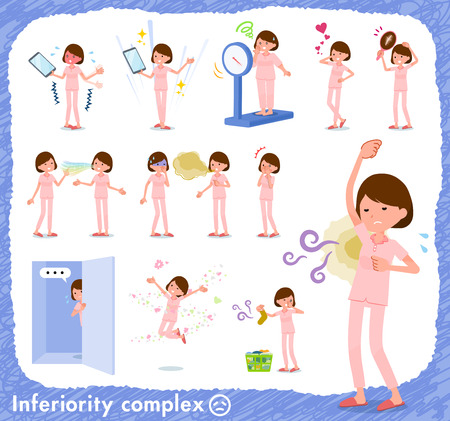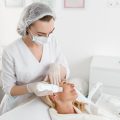Introduction to Light-Based Skin Treatments
In recent years, light-based skin treatments have become increasingly popular across the UK, offering innovative solutions for a range of cosmetic and dermatological concerns. Among these, Intense Pulsed Light (IPL) therapy stands out as a leading non-invasive option, but it is just one of several advanced technologies available in Britain today. Alongside IPL, various laser treatments and other light-based modalities are regularly used by professionals to address issues such as pigmentation, hair removal, acne, and vascular lesions. This article aims to provide a comprehensive professional overview of IPL, traditional laser therapies, and other modern light-based interventions, contextualised specifically for a British audience. By examining their mechanisms, applications, and suitability within the context of UK clinical practice and patient expectations, we will clarify the key differences and advantages of each approach.
2. How IPL Differs from Other Lasers
In the realm of aesthetic and dermatological treatments in Britain, it is essential to understand the technological distinctions between Intense Pulsed Light (IPL) and other laser-based modalities. While both IPL and lasers are utilised to address a range of skin concerns, their mechanisms, wavelengths, and specific applications set them apart significantly.
Technological Differences
IPL devices emit a broad spectrum of light wavelengths, which are scattered across the skin. This enables IPL to target multiple chromophores—such as melanin and haemoglobin—making it versatile for treating pigmentation, vascular lesions, and hair removal. In contrast, lasers produce a single, focused wavelength of light that penetrates at a specific depth, allowing for more precise targeting of particular skin issues.
| Treatment Type | Light Source | Wavelength(s) | Target Chromophore |
|---|---|---|---|
| IPL | Polychromatic (broad spectrum) | Multiple (usually 500-1200nm) | Melanin, haemoglobin |
| Laser (e.g., Nd:YAG) | Monochromatic (single wavelength) | 1064nm | Deeper melanin, blood vessels |
| Laser (e.g., Alexandrite) | Monochromatic | 755nm | Superficial melanin (hair removal, pigmentation) |
| Laser (e.g., CO2/Er:YAG) | Monochromatic | 10,600nm/2940nm | Water in skin tissue (resurfacing) |
Treatment Mechanisms and Applications
The broad-spectrum nature of IPL allows practitioners in the UK to customise filters for targeting different skin concerns within one session—such as redness from rosacea or sun-induced pigmentation. On the other hand, laser treatments are highly specific: for example, Nd:YAG lasers penetrate deeper to treat vascular lesions or darker skin types effectively, while fractional CO2 lasers are chosen for intensive skin resurfacing to address wrinkles or acne scars.
Specific Skin Concerns Addressed
| Treatment Modality | Main Indications | Skin Types Suitable For | Downtime Expected |
|---|---|---|---|
| IPL | Pigmentation, sun damage, mild vascular lesions, hair reduction | I-IV (with caution on V-VI) | Mild redness; minimal downtime |
| Nd:YAG Laser | Deep vascular lesions, hair removal on darker skin tones, tattoo removal | I-VI (safest for darker skins) | Mild swelling/redness; short downtime |
| Ablative Fractional Laser (CO2/Er:YAG) | Severe photodamage, deep wrinkles, acne scarring, resurfacing needs | I-III (caution on IV-VI due to pigmentation risks) | Moderate to significant; up to 2 weeks recovery time possible |
| Aleaxndrite Laser | Pigmentation issues, hair removal (lighter skin types best) | I-III primarily | Mild to moderate; transient pigment changes possible |
The British Perspective on Safety and Efficacy
The choice between IPL and various laser treatments in Britain depends heavily on the individual’s skin type, concern severity and desired downtime. British clinics prioritise evidence-based protocols tailored to local Fitzpatrick skin types commonly seen across the UK population. Understanding these differences empowers patients to engage in informed discussions with their practitioner before embarking on treatment.
![]()
3. Common Light-Based Treatments in UK Clinics
Across the UK, clinics offer a variety of light-based treatments to address a wide spectrum of skin concerns and patient needs. Among the most prevalent options are Intense Pulsed Light (IPL), laser hair removal, fractional lasers, and LED phototherapy. Each modality has its own distinct mechanism, strengths, and considerations regarding suitability for different skin types.
Intense Pulsed Light (IPL) remains highly popular due to its versatility in treating pigmentation irregularities, sun damage, redness, and even unwanted hair. IPL devices use broad-spectrum light that targets multiple chromophores, making them especially suitable for individuals with lighter skin tones (Fitzpatrick I-III). However, those with darker complexions may require caution due to increased risk of pigmentation changes.
Laser Hair Removal is another staple in British clinics. Devices such as Alexandrite and Nd:YAG lasers are tailored for various skin types: Alexandrite is preferred for fairer skin, while Nd:YAG is considered safer and more effective for darker or tanned skin. This targeted approach allows practitioners to personalise treatment plans based on individual characteristics.
Fractional Laser Resurfacing—including both ablative and non-ablative technologies—addresses deeper textural issues such as acne scarring, fine lines, and overall rejuvenation. These treatments are generally more intensive and may involve downtime; therefore, clinicians carefully assess each patient’s suitability, particularly regarding skin tone and sensitivity to avoid adverse effects.
LED Phototherapy is increasingly favoured for its gentle yet effective action against inflammation, acne, and signs of ageing. As it does not generate heat or cause damage to the epidermis, LED is universally safe across all skin types and is commonly used as an adjunct to other therapies or post-procedure care in British practices.
The range of available light-based modalities ensures that patients in Britain have access to personalised solutions according to their unique skin type and concern—from subtle pigment correction to comprehensive rejuvenation. A thorough consultation with a qualified practitioner remains vital for optimal outcomes and safety.
4. Safety, Regulation, and Practitioner Qualifications
When comparing IPL to other laser and light-based treatments in Britain, it is essential to understand the landscape of safety, regulation, and practitioner qualifications. The UK has established strict guidelines for aesthetic procedures to protect patients and ensure a high standard of care. Below is an overview of what patients should be aware of when selecting a clinic for IPL or any other laser treatment.
Safety Standards in the UK
All clinics offering IPL and laser treatments must adhere to regulations enforced by the Care Quality Commission (CQC) in England, Healthcare Improvement Scotland (HIS), and Healthcare Inspectorate Wales (HIW). These bodies are responsible for registering clinics, inspecting facilities, and ensuring compliance with health and safety protocols. Treatments must be carried out using CE-marked devices that meet EU and UK safety standards.
Practitioner Certification and Training
Practitioner expertise is critical to treatment success and patient safety. In the UK, there are no universal legal requirements for non-surgical cosmetic practitioners outside of NHS settings; however, reputable clinics will employ staff who possess:
- A relevant medical or aesthetic qualification (such as GMC-registered doctors, NMC-registered nurses, or HCPC-registered allied health professionals)
- Accredited training in laser/IPL use from recognised institutions
- Continuous professional development (CPD) related to skin health and laser safety
What Patients Should Look For
Choosing a safe clinic involves careful research. Patients are advised to consider the following criteria before booking a procedure:
| Factor | What to Check |
|---|---|
| CQC/HIS/HIW Registration | Clinic is registered and regularly inspected by relevant authority |
| Practioner Credentials | Staff hold valid medical/aesthetic qualifications & specialist training |
| Device Safety | Treatments performed with CE-marked machines suitable for your skin type |
| Consultation Process | Thorough assessment of your medical history & skin suitability prior to treatment |
| Aftercare Support | Clinic provides clear aftercare instructions and follow-up appointments if needed |
The Importance of Transparency and Patient Rights
A reputable British clinic will be transparent about potential risks, expected results, pricing structures, and cancellation policies. Written consent should always be obtained before any procedure. Patients have the right to ask questions about the practitioner’s experience, device specifications, and any concerns regarding side effects or complications.
5. What to Expect: Results, Downtime, and Aftercare
When considering IPL (Intense Pulsed Light) versus other laser and light-based treatments in Britain, it’s essential to set realistic expectations regarding results, downtime, and aftercare. Each treatment modality offers distinct benefits, recovery profiles, and aftercare requirements tailored for UK clients’ lifestyles.
Anticipated Outcomes: Visible Improvements and Gradual Progress
IPL is renowned for its versatility in treating pigmentation, redness, and sun damage with gradual improvements typically seen over several sessions. British clients often report enhanced skin clarity and a more even tone following a course of IPL treatments. In contrast, targeted lasers such as fractional or ablative devices may yield more dramatic results after fewer sessions—especially for deep wrinkles or pronounced scarring—but with an increased risk of temporary redness or swelling. LED light therapy, while gentler, tends to deliver subtler improvements over time, making it ideal for ongoing skin maintenance rather than intensive correction.
Downtime: Recovery Expectations Across Treatments
A key consideration for many UK patients is minimising disruption to daily routines. IPL generally involves minimal downtime; most people experience mild redness akin to a slight sunburn that resolves within hours to two days. Fractional and ablative lasers can require longer recovery periods—sometimes up to a week—due to peeling, swelling, or crusting. LED therapy boasts no downtime at all, allowing immediate return to work or social commitments. For those with busy lifestyles in the UK, these differences are crucial when planning around work or family obligations.
Aftercare Guidance: Recommendations for the British Climate
Post-treatment care is vital for maximising results and ensuring comfort. Following IPL or laser treatments, practitioners in Britain advise avoiding direct sunlight—a particular challenge during the occasional sunny spells—and using broad-spectrum SPF even on cloudy days. Hydration and gentle cleansing are recommended across all modalities, with specific products often suggested by your practitioner. Cold compresses can soothe any post-treatment warmth or sensitivity. Additionally, given the variable British weather, it’s wise to avoid hot baths or vigorous exercise immediately after treatment to prevent irritation. LED treatments require little aftercare beyond standard skincare practices.
Summary: Tailoring Choices for British Clients
The choice between IPL and other light-based therapies depends on individual goals, tolerance for downtime, and lifestyle considerations unique to UK clients. By understanding what to expect from each option—including anticipated results, recovery times, and aftercare recommendations—you can make informed decisions that align with your personal needs and ensure optimal outcomes within a British context.
6. Which Treatment is Right for You?
When it comes to choosing between IPL and other laser or light-based treatments available in Britain, the decision should be based on a blend of personal skin goals, lifestyle demands, and practical considerations. It’s not simply a matter of what’s popular on the High Street or recommended by friends; rather, a thoughtful approach tailored to your individual needs is essential.
Understanding Your Skin Goals
Begin by identifying what you wish to achieve—are you seeking hair reduction, improved skin texture, treatment for pigmentation, or perhaps management of rosacea? IPL tends to be versatile and suitable for those with lighter skin tones targeting general rejuvenation or large areas like legs and arms. Conversely, specific laser devices may offer more precision for targeted issues such as deep-set pigmentation or vascular lesions, particularly for those with varied skin types common in Britain’s diverse population.
Lifestyle Considerations
Your routine and commitments play a significant role. IPL often requires multiple sessions but boasts minimal downtime, making it ideal for busy professionals or parents juggling daily life. Laser treatments, while potentially more intensive per session, may offer quicker results for some conditions but might involve more aftercare—something to factor in if you’re planning events or holidays around typical British seasons.
The British Perspective
Britain’s climate and cultural norms also influence the best choice. For example, sun exposure is typically less than in sunnier climes, reducing certain risks post-treatment. However, unpredictable weather means protective aftercare remains important year-round. Moreover, many Britons value subtlety—choosing gradual improvements over dramatic changes—which aligns well with both IPL and modern fractional lasers when managed by experienced practitioners.
Final Advice
The wisest step is always a thorough consultation with a qualified UK practitioner who understands your skin type and lifestyle. Be candid about your expectations and commitments; ask about the clinic’s experience with your particular concerns. Remember: in Britain’s well-regulated aesthetic sector, safety and realistic outcomes are paramount. By carefully matching your goals and daily routine with the right technology—and embracing a bit of patience—you’ll be well-placed to enjoy naturally refreshed results that suit both you and British sensibilities.


